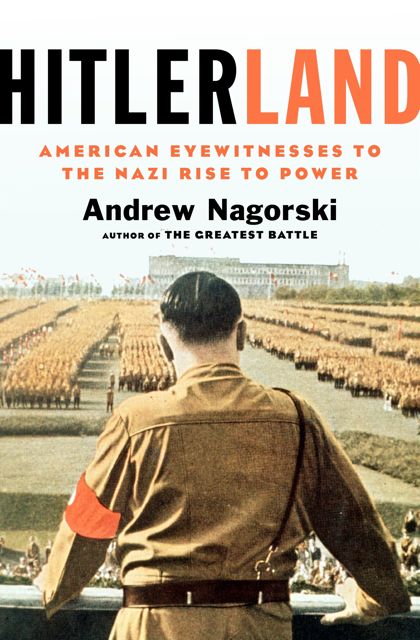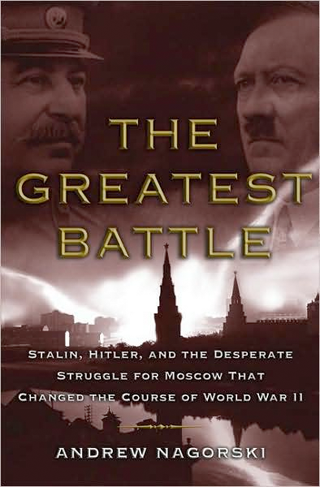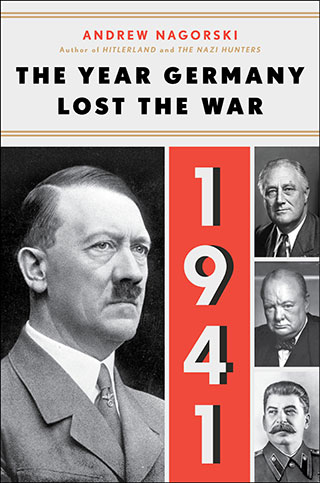On December 8, 1941, the day after Japan’s attack on Pearl Harbor, President Franklin D. Roosevelt addressed a joint session of Congress to ask for a declaration of war against Japan. The Senate approved the measure by a vote of 82 to 0, and the House of Representatives passed it by a margin of 388 to 1. But the president had deliberately omitted Nazi Germany from that declaration, which was very much in keeping with his determination not to be seen as the initiator of a new global conflagration. Instead, on December 11, Adolf Hitler addressed the Reichstag to denounce Roosevelt and “the full diabolical meanness of Jewry rallied around the man,” while declaring war on the United States.
One of the war’s greatest ironies was that the Tripartite Pact, which was signed by Germany, Japan, and Italy, did not mandate that action. When Hitler ordered his armies to invade the Soviet Union earlier that year, he did not provide Japan with any advance notice. Tokyo subsequently remained aloof from the conflict between the two totalitarian giants, studiously ignoring the pleas of German officials who were trying to entice Japan to send its troops into Siberia. Berlin was then caught as much by surprise as Washington by the attack on Pearl Harbor. These were two putative allies who did not trust each other enough to share key information about their major moves.
Yet despite the dysfunctional nature of the Axis alliance, Hitler felt he had no choice but to take the giant step of immediately taking on the US as well. As Klaus H. Schmider, a German military historian who teaches at Britain’s famed Sandhurst military academy, writes in his new book, Hitler’s Fatal Miscalculation, “It was without a doubt the one decision which, while being completely avoidable, also irreversibly doomed the Third Reich” (p. 2). This statement raises a critical question pondered by historians in countless books—including my own 1941: The Year Germany Lost the War (2019)—and articles ever since: What possessed the German dictator to take such a step?
One explanation was that Germany and the US were all but officially at war already. Roosevelt had steadily weakened the Neutrality Acts, which were designed to keep American vessels out of conflicts zones, while ramping up the flow of Lend-Lease supplies to Britain and the Soviet Union. This led to clashes at sea, including the first U-boat attacks on US ships. After Pearl Harbor, a wider war looked inevitable; it was only a question of who would openly call for it. Always conscious of isolationist sentiment at home, Roosevelt had no desire to do so, and Hitler let him off the hook. As the Führer saw it, German pride was at stake. According to his foreign minister, Joachim von Ribbentrop, “A great power doesn’t let itself have war declared on it, it declares war itself.”1
None of that, however, provides a fully satisfactory explanation of why and how Hitler convinced himself that this was a gamble worth taking. In his effort to address those issues, Schmider has produced a sprawling volume, grounded in impressively painstaking archival research, about Hitler’s actions and the broader military and economic picture at that early stage of the war. The book is crammed with a surfeit of details that speaks to his mastery of the subject matter but can also overwhelm the reader. At times, even Schmider appears to lose the thread of his argument as he moves back and forth chronologically and thematically. But in the end, he presents a thesis that will trigger more debate about what Hitler was really thinking rather than provide a definitive answer.
At the core of this discussion is how the German dictator viewed the US. “As far as the assessment of enemy threat potential was concerned, it is safe to say Hitler never underestimated the United States,” Schmider writes (p. 544). Pointing out that the Führer had repeatedly warned Admiral Erich Raeder, the commander of the Kriegsmarine, to avoid clashes with American ships during the early days of the war in the Atlantic, he adds: “[T]here is no evidence that the dictator at any point before mid-March 1941 seriously entertained the notion of going to war with the US or contemplated any such prospect with equanimity” (p. 545).
Schmider is correct in part of his argument: During the early days of the conflict, Hitler sought to isolate and subdue Britain but still hoped that the Americans could be kept from full-scale engagement in the war, at least for a considerable period of time. However, Schmider is far less convincing in his assertion that the German dictator maintained a clear-eyed view of the US all along. “The notion that a long-held racist conceit led him to chronically underestimate American power and that this in turn colored his strategic estimates is untenable,” he insists. “If anything, the exact opposite was the case” (p. 55).
The author is referring to numerous postwar accounts by Hitler’s associates. Ernst “Putzi” Hanfstaengl, a Harvard graduate of mixed German–American parentage who served as his chief propagandist in the early days of his rise to power, claimed that he tried to educate Hitler about the growing importance of the US—with no success. Hitler’s ideas about America were “wildly superficial,” Hanfstaengl recalled, and his main preoccupation were the Jews, who were allegedly pulling all the strings there. Architect Albert Speer, who served as minister of armaments and war production, described Hitler as completely dismissive of Americans who were “nothing but a mass of immigrants from many nations and races,” which of course meant inferior races who “would certainly not withstand a great trial by fire.”2
Schmider maintains that such accounts grossly misrepresented Hitler’s views; however, the evidence hardly backs up his claims that the German leader never underestimated the US. In remarks to his generals on September 14, 1940, Hitler predicted: “America’s rearmament will not reach its peak before 1945.”3 Later that year and in early 1941, he began to revise his estimates, but he was still very much a captive of his prejudices and wishful thinking.
Hitler had similarly underestimated British determination to hold out against the Blitz, the German bombing campaign aimed at London, Coventry, and other cities. He was constantly puzzled by their rejection of his “peace” overtures, which would have meant surrendering to his dictates. His army adjutant Gerhard Engel summarized the Führer's views in his own diary on December 18, 1940: “Hope Eng(lish) will relent; does not believe USA will enter war.”4 Or, as Speer put it, “Hitler actually knew nothing about his enemies and even refused to use the information available to him.”5 That was already proving to be equally true for Russia, a country he had believed his forces could swiftly conquer and colonize.
Schmider is far more realistic in his portrayal of how the time factor figured into Hitler’s disastrous decisions. Adam Tooze, the British historian and author of The Wages of Destruction: The Making and Breaking of the Nazi Economy (2006), asserted that there was a “mad logic” involved—and Schmider makes a similar case. Like Tooze, he argues that Hitler understood that given the huge industrial and military potential of the US that was still largely untapped, Germany’s position was likely to get worse over time. As a result, Hitler's conclusion was that his only chance was to push for a swift victory before the balance of power shifted.
Hitler had based his decision to attack the Soviet Union, a country with a huge advantage in manpower and natural resources, on the same kind of contorted logic. But by late 1941, the German invaders were encountering growing resistance from the Red Army and were confronting the onslaught of a brutal Russian winter, putting an end to their initial string of victories. The day after Pearl Harbor, Hitler convinced himself that yet another expansion of the war would work to his advantage, bringing a German triumph closer. “We can’t lose the war at all,” he declared. “We now have an ally that has never been conquered in three thousand years.” He believed that Japan would tie down the Americans in the Pacific, making it impossible for them to continue providing vital supplies to Britain and the Soviet Union.
According to Winston Churchill, however, only “silly people” underestimated the Americans. Once Hitler declared war on that country, the British leader was confident of one thing: “So we have won after all!” He proclaimed, “Hitler’s fate was sealed.” He understood that an Allied victory would be long in coming, and the cost in human lives and destruction would be horrific, but he genuinely believed the outcome was no longer in doubt.
At the end of his study, Schmider notes that Hitler may have had a moment of clarity. “He seems to have realized by the turn of the years 1941–42 that he had just made the strategic miscalculation of the century,” he writes (p. 549). However, Schmider fails to point out that Hitler did not draw the logical conclusion from this insight, even if it really occurred to him. While acknowledging some of the fundamental flaws in Hitler’s judgment, Schmider all too often overestimates his acuity. The German leader would continue to maintain that he was destined to emerge victorious almost to the end of his days, clinging to his vision of a thousand-year Reich. This was not just bad judgement; it was astronomical folly, with all the ensuing tragic consequences.









